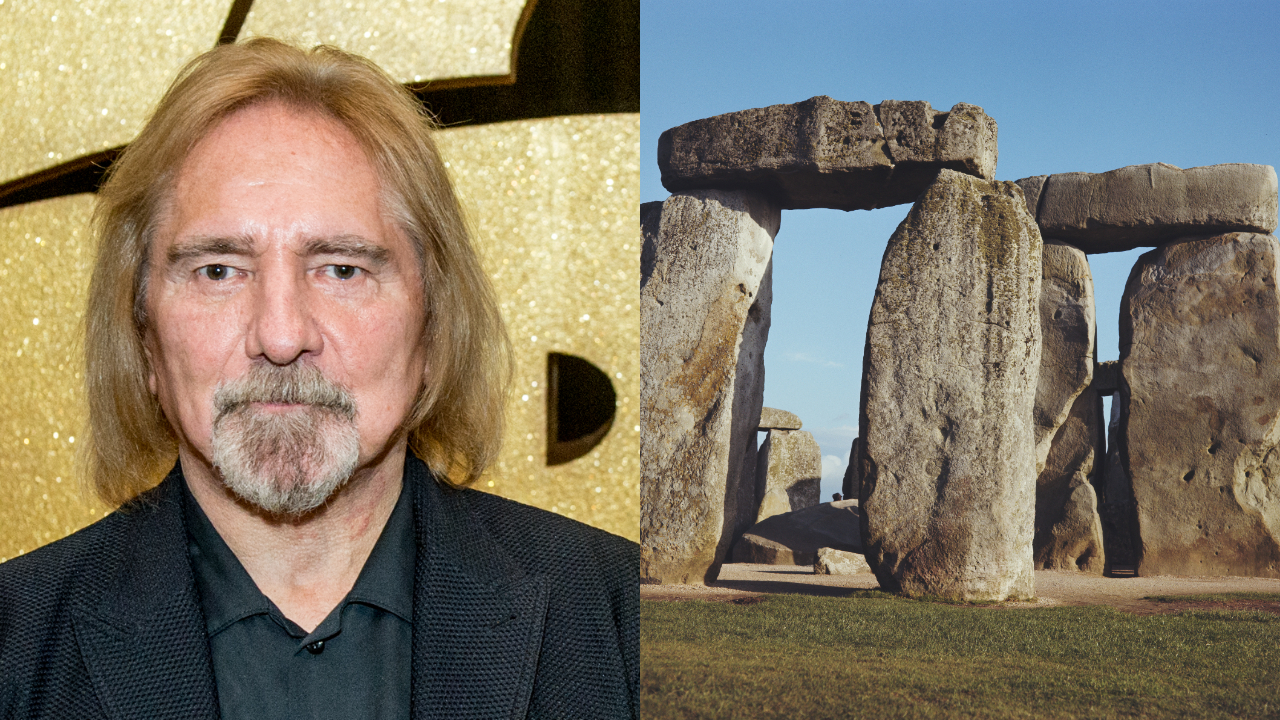In 1983, Black Sabbath found themselves in danger of being outflanked by not one, but two, of their former vocalists.
Having recruited Jake E. Lee as his new guitarist following the tragic passing of Randy Rhoads, Ozzy Osbourne would return in triumphant form with his third solo album Bark At The Moon, while his replacement in Sabbath, Ronnie James Dio, had bounced back from his own acrimonious split with Tony Iommi and Geezer Butler to launch his own solo band, Dio, with a brilliant debut album, Holy Diver.
Sabbath's notoriously combative manager Don Arden, still smarting over his daughter Sharon's decision to manage Ozzy, wasn't a man who took kindly to his charges being pushed out of the spotlight, and having recruited former Deep Purple vocalist Ian Gillan to front a new Mk. III Sabbath line-up on their new Born Again album, Arden had a brainwave in regards to how the godfathers of metal could re-establish themselves as rock giants: they should perform live in front of giant rocks.
The concept, and its disastrous execution, is explained in excruciating detail in Geezer Butler's entertaining, recently-released new memoir Into The Void.
"Presumably because we had an instrumental called Stonehenge on the album, Don wanted a Stonehenge stage set, with a massive sun rising up behind the stones as the show progressed," Butler writes. "I thought it was an utterly ridiculous idea."
The idea descended into farce from the moment that the designers of the new stage set looked at Sabbath's tour manager's plans for the production, and wrongly interpreted his measurements of the size of the rocks as pertaining to metres rather than feet. As a consequence, the stage props which were delivered to Sabbath were three times larger than they were supposed to be.
"When we rehearsed at the National Exhibition Centre in Birmingham, the stones were set up on the floor and actually looked really expressive," Butler recalls, noting that the idea of the 'rising sun' was abandoned due to the costs involved. "But when we did our first gig of the tour in Norway, and out the stones on the stage, they were almost touching the ceiling.
"That's when Don had another brainwave: 'We'll have a midget crawling on top of them, dressed as the baby devil on the album cover'... At our gig in Canada, this little bloke, who was dressed in a red leotard with long yellow fingernails and horns stuck to his head, was crawling across the top of the tallest stone and fell off. That was actually supposed to happen, but someone had removed the mattress, and the poor fella injured himself quite badly. That was the end of the devil baby."
At this point, you may well be noting some similarities with a pivotal scene in 'mockumentary' This Is Spinal Tap where the British hard rock legends commission as Stonehenge stage set, only to receive a miniature set of stones when the designers confuse "feet" with "inches" on the scale drawings. Geezer Butler is not blind to this.
"Years later we did a photo shoot with Spinal Tap and asked them if they'd based those scenes on us, but they said it was just coincidence," he writes. "I find that difficult to believe.
"People often ask if I've seen the film... I always reply, 'Seen it? I've lived it.' I know Iron Maiden hated that film, thought it was an affront, but it's one of the funniest films I've ever seen, because it's so accurate."
Into The Void is the third memoir written by a member of Black Sabbath’s classic line-up: original line-up. Ozzy Osbourne's I Am Ozzy was published in 2009, and Tony Iommi's Iron Man: My Journey through Heaven and Hell with Black Sabbath was published in 2011. Butler's book is available to purchase here.

